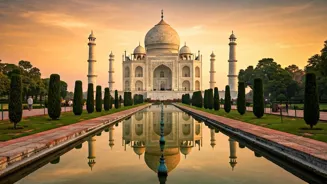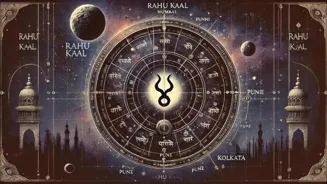Uncover the Evolution of Exercise in India: From Ancient Traditions to Modern Fitness Frenzy. Discover the journey from functional fitness to holistic well-being
In the bustling lanes of Mumbai, the serene
ghats of Varanasi, and the sprawling parks of Delhi, one thing remains constant: the human need for movement. Exercise, in its various forms, has been an integral part of Indian life for centuries, predating the fancy gyms and fitness apps of today.
Understanding the history of exercise in India is like peeling back layers of time, revealing traditions, philosophies, and societal values that have shaped our present-day understanding of health and well-being.
Indus Valley Civilization valued physical fitness for survival
Our ancestors, those living in the Indus Valley Civilization, were no strangers to physical exertion. Archaeological evidence suggests a society that valued strength and agility. The very act of survival – hunting, farming, and building – demanded a high level of physical fitness.
These activities weren't viewed as separate from daily life but were embedded within it. The tools they crafted, the settlements they built, all speak volumes about their physical prowess. They didn't have treadmills, but they walked miles every day.
They didn't have weight machines, but they lifted heavy stones to construct their homes and places of worship. This functional fitness, born out of necessity, laid the foundation for a deep-rooted appreciation for physical activity.
Indian civilization's holistic approach to exercise and martial arts
As Indian civilization progressed, exercise evolved beyond mere survival into structured practices, interwoven with spirituality and philosophy. From the ancient Vedic texts emerged yoga, an art that transcends the purely physical.
Yoga asanas, or postures, were designed to harmonize the body, mind, and spirit. It was more than just stretching, it was (and still is) a way to connect with oneself and the universe.
Simultaneously, martial arts traditions flourished, from the sword fighting of the Rajputs to the stick fighting of rural communities. These weren't just about combat, they also emphasised discipline, focus, and physical conditioning.
The emphasis was on holistic well-being, recognizing the inseparable link between physical and mental fitness.
Mughal era promoted kushti; British rule introduced Western sports in India
The Mughal era brought new influences to India, including wrestling or 'kushti', which thrived in arenas or 'akharas'. These centres were not just places of physical training but also communities where wrestlers lived and trained together, adhering to a strict code of conduct and diet.
Strength, stamina, and technique were all valued, and wrestlers were revered for their physical prowess and discipline. The British colonial period witnessed the introduction of Western sports like cricket, football, and hockey, which gradually gained popularity among the Indian population.
These sports provided new avenues for physical activity and fostered a spirit of competition and teamwork.
Post-independence India embraces physical education boom
Post-independence, India experienced a surge in enthusiasm for physical education. Schools and colleges incorporated sports and exercise into their curriculum, promoting a culture of fitness among the youth.
Traditional forms of exercise, such as yoga and martial arts, also witnessed a revival, as people sought to reconnect with their cultural heritage. The rise of Bollywood also played a part, with actors showcasing toned physiques and inspiring many to hit the gym.
India's fitness boom: gyms, classes, internet info fuel craze for 'perfect' body
The late 20th and early 21st centuries have seen an explosion of fitness trends in India. Gyms have mushroomed in cities and towns, offering a wide range of equipment and classes. Aerobics, Zumba, and other Western fitness formats have also gained popularity.

The availability of information through the internet and social media has further fuelled the fitness craze, with people sharing workout routines, diet tips, and motivational content.
The focus has shifted, for some, from functional fitness to aesthetics, with an emphasis on achieving a 'perfect' body.
Focus on timeless fitness values from Indian heritage
However, amid these modern fitness trends, it's important to remember the core principles of exercise that have been passed down through generations in India.
The emphasis on holistic well-being, the integration of physical activity into daily life, and the connection between body, mind, and spirit are timeless values that continue to be relevant today.
Whether it's a brisk walk in the park, a yoga session at home, or a game of cricket with friends, the key is to find an activity that you enjoy and that keeps you moving.
The history of exercise in India teaches us that fitness is not just about looking good; it's about feeling good, living well, and connecting with the rich heritage of our land.











